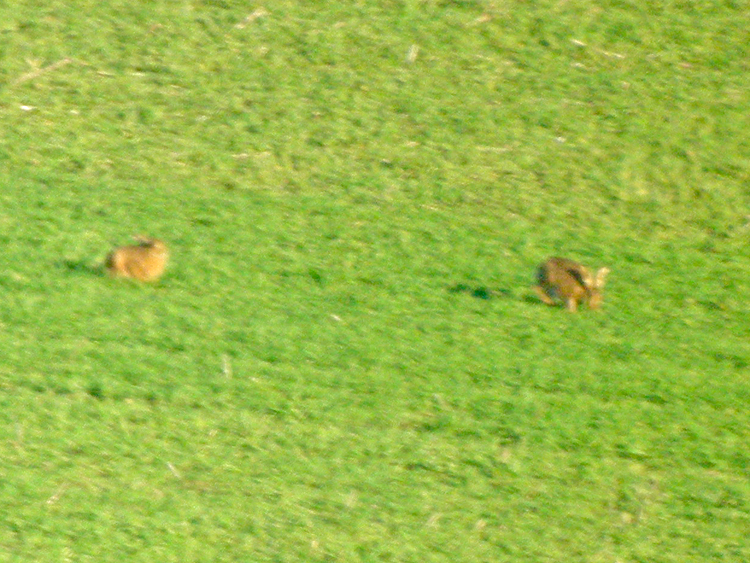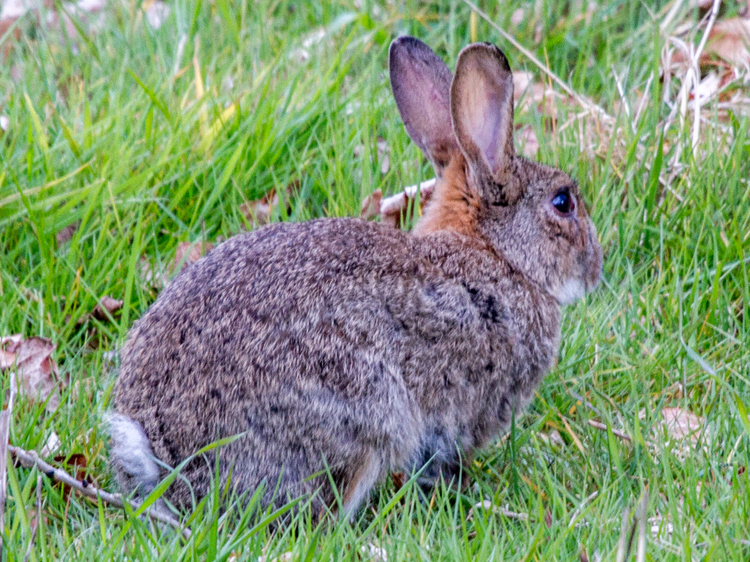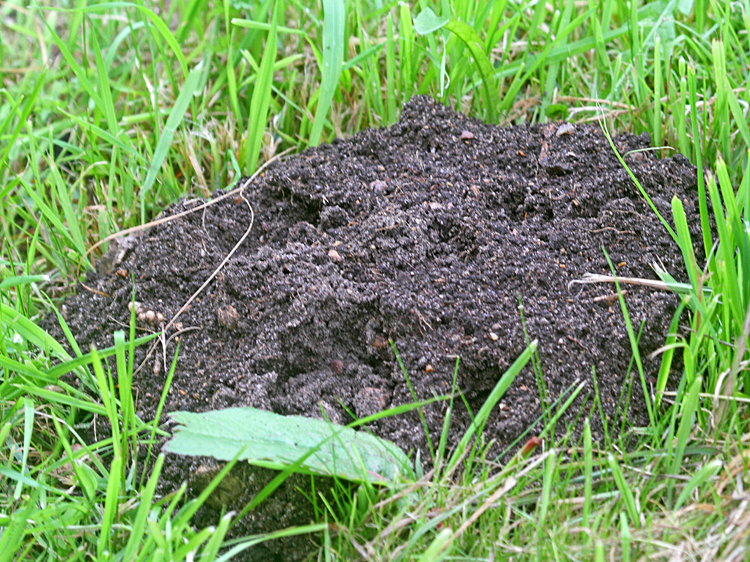Wildlife at the North Elmham Cathedral Meadows
Mammals
Species recorded since April 2018: 22.
Coverage: incomplete: we are missing records of most small mammals that require trapping under licence to survey comprehensively. Some bat detection has resulted in records of all the likely species of bats but not on sufficient occasions to understand their abundance or flight periods. In addition many of the larger mammals are nocturnal and shy, and may be using the meadows much more than the number of records suggest. In the most part identification confidence is high (where this is not the case that is clear from the species accounts below).
All photos below were taken at the Cathedral Meadows.
RODENTS
Grey Squirrel Sciurus carolinensis
Regularly recorded throughout the year. Most often seen along the railway but has been recorded at least once in every meadow.
 (1).jpg)
Grey Squirrel, 20th September 2019
Water Vole Arvicola amphibius
Present in the dyke that runs alongside the railway but usually very hard to see. Their presence is usually only given away by the holes in the base of the bank but for a few weeks in spring 2020 two voles were regularly seen well in the dyke and on the far bank, and one was sometimes seen here again in spring 2021.
Wood Mouse Apodemus sylvaticus
A number of small rodents (mice, voles or shrews) have been glimpsed but usually not seen well enough to put a name to. A couple have been seen well enough to say they were mice but only one well enough to narrow down the ID any further. A mouse was watched at close range for several minutes in the north-east corner of the chapel field on 12th August 2019, and was almost certainly a Wood Mouse. Theoretically it could have been a Yellow-necked Mouse (you really need to see them from underneath to be sure) but that species is rare locally so it was very much more likely to have been a Wood Mouse.
 (1).jpg)
presumed Wood Mouse, 12th August 2019
Brown Rat Rattus norwegicus
Occasionally seen along the track or, on one occasion, along the railway.
RABBITS and HARES
Brown Hare Lepus europaeus
Given that Hares are found in farmland all around North Elmham it is surprising that they aren’t seen more often in the farmland surrounding the Cathedral Meadows. It's less surprising that they aren’t in the meadows themselves (probably too disturbed) but it took nearly three years before they were seen from the meadows when scanning the farmland to the south-east.
Rabbit Oryctolagus cuniculus
Frequently seen along the railway or in the meadows close to the railway, and less commonly a bit further into the meadows. They are generally much easier to find at dawn or at dusk than during the day and can be found by torchlight in the night.
MOLES
Mole Talpa europaea
Plenty of evidence around the meadows of a thriving population of moles with mole hills recorded in every meadow and the chapel field. So far no actual moles have been seen though.
BATS
A bat survey took place in August 2018 using equipment loaned by the Norfolk Bat Survey. This involved leaving a microphone and sound-recording equipment out overnight on 6 nights at different locations around the meadows. The recordings were then sent to the Norfolk Bat Survey team who analysed them to work out what species were present and how many times each species passed the microphone. It turned out that nearly all of Norfolk’s bat species were recorded. In late 2020 DA obtained his own bat detecting equipment so hopefully there will be lots more records of bats over the coming years.
Whiskered/Brandt’s Bat Myotis mystacinus/brandtii
A single pass from one of these two species of bat was one of the more unusual records from the bat survey – but as these two species sound the same it is not possible to determine which of them was involved.
Daubenton’s Bat Myotis daubentonii
This is a medium-sized bat that feeds over water but was recorded from several locations around the meadows during the bat survey (20 passes in all).
Natterer’s Bat Myotis nattererii
Quite a common and widespread bat. 25 passes were recorded during the bat survey.
Leisler’s Bat Nyctalus leisleri
Although this species occurs throughout the county it is mainly recorded in the Brecks, so it was good to record single passes here on 3 nights during the bat survey.
Noctule Nyctalus noctula
One of the largest British bats and often appearing early in the evening, even before sunset. 13 passes were recorded during the bat survey.
Common Pipistrelle Pipistrellus pipistrellus
The commonest British bat species and second commonest recorded during the bat survey with 306 passes over the 6 nights. The two Pipistrelle species are by far the most numerous bat species detected more recently by the author's new detector.
Soprano Pipistrelle Pipistrellus pygmaeus
The commonest bat species recorded during the bat survey with 625 passes over the 6 nights. The two Pipistrelle species are by far the most numerous bat species detected more recently by the author's new detector.
Soprano Pipistrelle, 8th November 2020
Serotine Eptesicus serotinus
Like the Noctule, one of the largest British bats and appearing early in the evening. Recorded on all 6 nights of the bat survey with a total of 64 passes. So far only one recorded more recently by bat detector.
Barbastelle Barbastella barbastellus
A medium-sized bat with a pug-shaped nose. Only recorded from the upper (more westerly) sites with 6 passes during the survey.
Brown Long-eared Bat Plecotus auritus
A medium-sized bat and apparently one of the commonest in Norfolk. A total of 35 passes during the bat survey from most but not all locations.
CARNIVORES
Red Fox Vulpes vulpes
Only occasionally seen on the meadows themselves but much more frequently seen on adjacent farmland.
Otter Lutra lutra
Known to occur in the valley below the meadows with sightings reported either side of us, but not recorded from inside the recording area until February 2021 when a noisy pair watched in the dyke beside the railway.
Badger Meles meles
None seen and no setts but Badger hair was found along a mammal track in 2018 and a wasp nest was dug out by a badger in October 2020. A live animal has been seen in the Wildflower Meadow prior to the start of the survey.
DEER
Roe Deer Capreolus capreolus
Only occasionally seen on the meadows themselves but often seen on surrounding farmland or more distantly looking across the river towards Bintree Wood.
Muntjac Muntiacus reevesi
Often seen in and around the meadows, mostly along the railway or in adjacent meadows.

 (1).jpg)
 (1).JPG)



.JPG)
 (1).jpg)
.jpg)
 (5).JPG)
 (2).jpg)